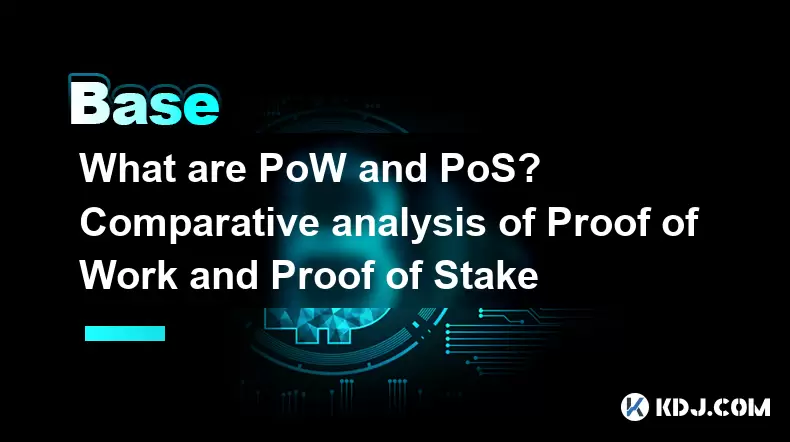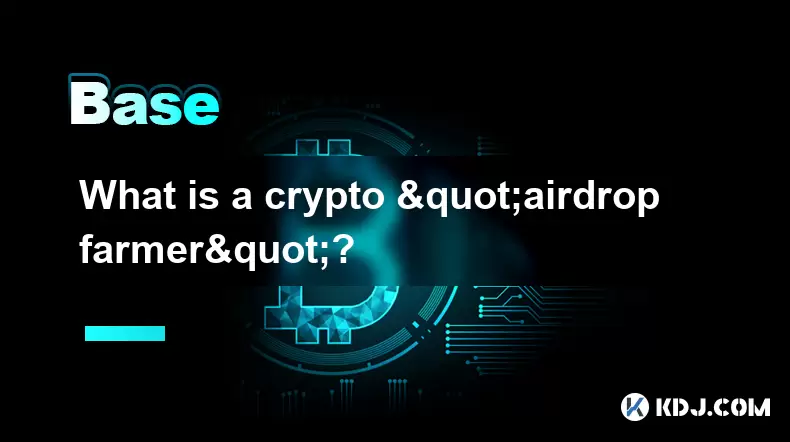-
 Bitcoin
Bitcoin $118400
0.47% -
 Ethereum
Ethereum $3836
2.20% -
 XRP
XRP $3.157
2.98% -
 Tether USDt
Tether USDt $0.9999
-0.03% -
 BNB
BNB $801.5
1.31% -
 Solana
Solana $180.9
2.07% -
 USDC
USDC $0.9999
-0.02% -
 Dogecoin
Dogecoin $0.2225
2.50% -
 TRON
TRON $0.3285
-1.02% -
 Cardano
Cardano $0.7789
2.60% -
 Hyperliquid
Hyperliquid $43.60
2.39% -
 Sui
Sui $3.892
4.41% -
 Stellar
Stellar $0.4229
3.34% -
 Chainlink
Chainlink $18.01
3.98% -
 Hedera
Hedera $0.2745
6.77% -
 Bitcoin Cash
Bitcoin Cash $582.3
3.38% -
 Avalanche
Avalanche $23.77
1.04% -
 Ethena USDe
Ethena USDe $1.001
0.01% -
 Toncoin
Toncoin $3.493
3.59% -
 Litecoin
Litecoin $110.0
2.48% -
 UNUS SED LEO
UNUS SED LEO $8.936
-0.37% -
 Shiba Inu
Shiba Inu $0.00001304
2.49% -
 Uniswap
Uniswap $9.999
1.09% -
 Polkadot
Polkadot $3.897
3.26% -
 Monero
Monero $308.6
-0.83% -
 Dai
Dai $0.9999
-0.01% -
 Bitget Token
Bitget Token $4.504
-0.04% -
 Pepe
Pepe $0.00001154
2.95% -
 Cronos
Cronos $0.1471
3.06% -
 Ethena
Ethena $0.6691
19.53%
What are PoW and PoS? Comparative analysis of Proof of Work and Proof of Stake
PoW and PoS are key blockchain consensus mechanisms; PoW uses energy-intensive mining, while PoS is more eco-friendly but risks centralization.
Jun 04, 2025 at 07:36 am

Proof of Work (PoW) and Proof of Stake (PoS) are two fundamental consensus mechanisms used in blockchain networks to achieve distributed consensus. These mechanisms play a crucial role in validating transactions and adding new blocks to the blockchain. This article provides a comprehensive comparative analysis of PoW and PoS, detailing their functionalities, advantages, and drawbacks within the context of the cryptocurrency ecosystem.
Understanding Proof of Work (PoW)
Proof of Work is the original consensus mechanism used by Bitcoin and several other cryptocurrencies. In a PoW system, miners compete to solve complex mathematical puzzles. The first miner to solve the puzzle gets the right to add a new block to the blockchain and is rewarded with newly minted cryptocurrency and transaction fees.
The process of solving these puzzles requires significant computational power, which in turn consumes substantial amounts of electricity. This energy-intensive nature of PoW is often cited as one of its primary drawbacks. However, the high energy requirement also provides a level of security; the cost of attempting to control the network through a 51% attack is prohibitively expensive.
Miners are incentivized to act honestly because the cost of mining (in terms of electricity and hardware) is high, and any attempt to manipulate the blockchain would likely be detected and rejected by the network. This mechanism ensures that the blockchain remains decentralized and secure.
Understanding Proof of Stake (PoS)
Proof of Stake operates on a different principle compared to PoW. Instead of miners competing to solve puzzles, validators are chosen to create new blocks based on the number of coins they hold and are willing to "stake" as collateral. The more coins a validator stakes, the higher their chances of being selected to add a new block and earn the associated rewards.
PoS is generally considered more energy-efficient than PoW because it does not require the same level of computational power. Validators simply need to hold and stake their coins, which can be done with minimal energy consumption. This makes PoS an attractive option for environmentally conscious blockchain projects.
However, PoS also has its challenges. One concern is the potential for centralization, as those with more coins have a greater influence over the network. Additionally, the concept of "nothing at stake" suggests that validators might support multiple blockchain forks, potentially leading to double-spending attacks. To mitigate these risks, many PoS systems implement additional security measures, such as slashing mechanisms that penalize malicious behavior.
Security Comparison: PoW vs. PoS
When comparing the security of PoW and PoS, several factors come into play. PoW's security is derived from its high energy consumption, making attacks on the network economically unfeasible. The decentralized nature of mining operations further enhances security, as no single entity can easily control the majority of the network's computational power.
PoS's security, on the other hand, relies on economic incentives and the amount of staked coins. While PoS is less energy-intensive, it requires robust mechanisms to prevent centralization and malicious behavior. Many PoS networks implement slashing penalties and other deterrents to ensure validator honesty.
Both mechanisms have proven effective in their respective environments, but the choice between PoW and PoS often depends on the specific goals and values of the blockchain project.
Energy Efficiency and Environmental Impact
Energy efficiency is a significant point of differentiation between PoW and PoS. PoW networks, such as Bitcoin, are notorious for their high energy consumption. The mining process requires specialized hardware that consumes vast amounts of electricity, leading to concerns about the environmental impact of these networks.
In contrast, PoS networks are far more energy-efficient. Validators do not need to solve complex puzzles, and the energy required to participate in the network is minimal. This makes PoS an appealing choice for blockchain projects aiming to minimize their carbon footprint.
The environmental impact of PoW has led to increased scrutiny and calls for more sustainable alternatives. As a result, many newer blockchain projects are opting for PoS or hybrid models that combine elements of both mechanisms.
Scalability and Transaction Speed
Scalability is another critical factor in the PoW vs. PoS debate. PoW networks often struggle with scalability due to the time and energy required to validate transactions and add new blocks. This can lead to slower transaction speeds and higher fees, especially during periods of high network congestion.
PoS networks, on the other hand, can offer better scalability and faster transaction speeds. Without the need for energy-intensive mining, PoS systems can process transactions more quickly and at a lower cost. This makes PoS an attractive option for applications that require high throughput and low latency.
However, the scalability advantages of PoS are not without challenges. Ensuring the security and decentralization of a high-speed PoS network requires careful design and implementation. Many PoS projects are still working to optimize their systems and achieve the desired balance between speed and security.
Economic Incentives and Network Participation
Economic incentives play a crucial role in both PoW and PoS systems. In PoW networks, miners are rewarded with newly minted cryptocurrency and transaction fees for their efforts. This incentivizes miners to contribute their computational power to the network, ensuring its security and operation.
In PoS networks, validators are rewarded for staking their coins and participating in the validation process. The rewards are typically distributed based on the amount of coins staked and the length of time they are held. This encourages long-term investment in the network and helps maintain its stability.
Both mechanisms have their unique approaches to incentivizing participation, but they share the common goal of ensuring the network's continued operation and security. The choice between PoW and PoS often depends on the specific economic model and goals of the blockchain project.
Frequently Asked Questions
Q1: Can a blockchain switch from PoW to PoS?
Yes, it is possible for a blockchain to transition from PoW to PoS. Ethereum, for example, has been working on a transition to PoS through its Ethereum 2.0 upgrade. This process involves significant technical changes and can take time to implement, but it demonstrates that such a shift is feasible.
Q2: Are there hybrid models that combine PoW and PoS?
Yes, some blockchains use hybrid models that combine elements of both PoW and PoS. These models aim to leverage the strengths of each mechanism while mitigating their weaknesses. Decred, for example, uses a hybrid system that combines PoW mining with PoS voting to achieve consensus.
Q3: How does the choice between PoW and PoS affect the value of a cryptocurrency?
The choice between PoW and PoS can impact the value of a cryptocurrency in several ways. PoW cryptocurrencies often have a more established track record and may be perceived as more secure due to their energy-intensive nature. PoS cryptocurrencies, on the other hand, may appeal to investors focused on sustainability and scalability. Ultimately, the value of a cryptocurrency is influenced by a wide range of factors, including its consensus mechanism.
Q4: What are some examples of cryptocurrencies using PoW and PoS?
Examples of cryptocurrencies using PoW include Bitcoin, Litecoin, and Bitcoin Cash. Examples of cryptocurrencies using PoS include Ethereum (post-Ethereum 2.0), Cardano, and Tezos. Each of these cryptocurrencies has unique features and use cases within the broader crypto ecosystem.
Disclaimer:info@kdj.com
The information provided is not trading advice. kdj.com does not assume any responsibility for any investments made based on the information provided in this article. Cryptocurrencies are highly volatile and it is highly recommended that you invest with caution after thorough research!
If you believe that the content used on this website infringes your copyright, please contact us immediately (info@kdj.com) and we will delete it promptly.
- SEC, Crypto, and Securities: Navigating the New Frontier
- 2025-08-01 05:10:12
- Spartans, Sports Betting, and the Top Spot: A New Era of Crypto Gambling
- 2025-08-01 05:51:38
- Ondo Finance, RWA Tokenization, and the White House Report: A New Era for Digital Finance
- 2025-08-01 05:51:38
- TON Blockchain: Is It the Everyday Blockchain of the Future?
- 2025-08-01 05:55:12
- Cardano (ADA) Market Cap: Can It Compete with Emerging Cryptocurrencies and Meme Coins?
- 2025-08-01 04:30:12
- Memecoin Mania: MEME's Volume Spike Signals Bullish Times Ahead?
- 2025-08-01 05:55:12
Related knowledge

What is the difference between CeFi and DeFi?
Jul 22,2025 at 12:28am
Understanding CeFi and DeFiIn the world of cryptocurrency, CeFi (Centralized Finance) and DeFi (Decentralized Finance) represent two distinct financia...

How to qualify for potential crypto airdrops?
Jul 23,2025 at 06:49am
Understanding What Crypto Airdrops AreCrypto airdrops refer to the distribution of free tokens or coins to a large number of wallet addresses, often u...

What is a crypto "airdrop farmer"?
Jul 24,2025 at 10:22pm
Understanding the Role of a Crypto 'Airdrop Farmer'A crypto 'airdrop farmer' refers to an individual who actively participates in cryptocurrency airdr...

What is the difference between a sidechain and a Layer 2?
Jul 20,2025 at 11:35pm
Understanding the Concept of SidechainsA sidechain is a separate blockchain that runs parallel to the main blockchain, typically the mainnet of a cryp...

What is the Inter-Blockchain Communication Protocol (IBC)?
Jul 19,2025 at 10:43am
Understanding the Inter-Blockchain Communication Protocol (IBC)The Inter-Blockchain Communication Protocol (IBC) is a cross-chain communication protoc...

How does sharding improve scalability?
Jul 20,2025 at 01:21am
Understanding Sharding in BlockchainSharding is a database partitioning technique that is increasingly being adopted in blockchain technology to enhan...

What is the difference between CeFi and DeFi?
Jul 22,2025 at 12:28am
Understanding CeFi and DeFiIn the world of cryptocurrency, CeFi (Centralized Finance) and DeFi (Decentralized Finance) represent two distinct financia...

How to qualify for potential crypto airdrops?
Jul 23,2025 at 06:49am
Understanding What Crypto Airdrops AreCrypto airdrops refer to the distribution of free tokens or coins to a large number of wallet addresses, often u...

What is a crypto "airdrop farmer"?
Jul 24,2025 at 10:22pm
Understanding the Role of a Crypto 'Airdrop Farmer'A crypto 'airdrop farmer' refers to an individual who actively participates in cryptocurrency airdr...

What is the difference between a sidechain and a Layer 2?
Jul 20,2025 at 11:35pm
Understanding the Concept of SidechainsA sidechain is a separate blockchain that runs parallel to the main blockchain, typically the mainnet of a cryp...

What is the Inter-Blockchain Communication Protocol (IBC)?
Jul 19,2025 at 10:43am
Understanding the Inter-Blockchain Communication Protocol (IBC)The Inter-Blockchain Communication Protocol (IBC) is a cross-chain communication protoc...

How does sharding improve scalability?
Jul 20,2025 at 01:21am
Understanding Sharding in BlockchainSharding is a database partitioning technique that is increasingly being adopted in blockchain technology to enhan...
See all articles

























































































